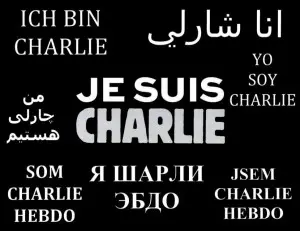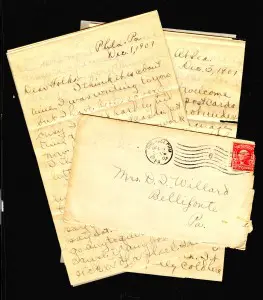Thank You, US Postal Service
January 25, 2015
The United States Postal Service gets a lot of grief these days. Derided as the delivery agent for ‘snail mail,’ they are criticized for being too expensive, too slow, outdated and time consuming in the era of instant communication.
Yes, I have tracked letters sent via ‘Priority Mail’ as they traveled to San Diego before reaching their intended destination 10 days later, two zip codes from my office. I can send a package to Hawaii (from San Francisco) in two days, but the same size box to Boston takes over a week.
And yes, grandma, I remember when a first class stamp was 5 cents. I now buy forever stamps in rolls of 100, so I don’t even know what first class postage is. (Great marketing, if you ask me.)
I can text my friends all over the country and within 10 minutes will have a response…any longer and I get impatient. Email, which we all thought was great a few years ago, is now too slow, since most people still have to check before responding.
I tweet to my followers, and most of my relatives have Facebook pages,so we’ll all know who’s doing what. I write this blog so everyone knows how I feel about what’s going on in the world.
But none of those methods can generate the emotions of a stamped letter. Neuroscientists now know that memories are more than just events. Our brains recall all five senses and any of them can spark a memory.
I was reminded of that this week, when a good friend, David Allen, sent me a batch of letters, found while cleaning out his mother-in-law’s attic.
They were written over 47 years ago when I was a freshman at Bucknell University in Lewisburg, PA. In fact, they were written in the first few months of college, when I was really still attached to my high school experience and scared to death about the future.
I remember the onion paper, the smell of the inked ribbon , and the old green and white Smith Corona that I used, to peck out letters to my parents, friends and former high school classmates. I still have the typewriter in fact – even had it reconditioned after I found it while going through my old homestead when my Dad died. I’m told it’s a collector’s item.
The letters were written to David’s wife, Betty, my best friend, and while we were never involved romantically, are filled with good natured banter that would pass for flirtation.
The actual content is really irrelevant: my observations about classes, social life, campus events, and gossip. It was 1967, and I know every campus was awash in protest and politics, but there’s none of that, so I doubt Oliver Stone will need them for some new 1960’s expose.
But for me, they are more important than any email, tweet or text I will ever send. When I re-read the words, and hold the letters, the memories of those years come flooding back. More importantly, I’m talking to my friend, Betty, again, even though she was struck down by cancer 12 years ago.
So, while I can find endless versions of various web pages, and can see the trail of my texts to friends and colleagues, none of them will ever hold the power of the printed word that I can pick up, hold in my hand, and still smell the memories from so many years ago.
For that I thank the US Postal Service and David, who was thoughtful enough to mail them back to me..
Would You Reprint Charlie Hebdo’s Cartoons?
January 13, 2015
Ever since the attack on Charlie Hebdo last week I’ve been wondering what I would have done if I were still an editor at a newspaper.
The day after the attack, I was consumed with embarrassment for my profession when so few papers, who reported the murders, printed any of the offending cartoons.
As part of their coverage some publications in Europe did print a cartoon, but except for the Washington Post, I’m not aware of any major US publications who printed an example.
Even the Post printed the cartoon on the editorial page leaving the news columns free to describe the artwork. They, like the New York Times and other publications, claimed the actual drawing ‘were not relevant’ and their message could be communicated in words.
Clearly the cartoons were relevant, and just as clearly, mere words could not describe why the cartoons led to the attack. In truth, after looking at a sampling of the cartoons, I found many childish, insulting and tasteless, but I would still defend their right to publish them.
Almost every religion came under attack, but according to some, only the Muslim faith specifically prohibits depictions of their prophet.
My outrage, was tempered by a good friend, recently ‘retired’ from a small local publication, who noted that if had been editor, he’s not sure if, as a married father, he could take the risk of publication, even in a small hometown weekly.
Would the emotions of any editor be any different. Presumably they could all be the mothers or fathers of young children, and publication would open them up to the same fate as Charlie Hebdo’s cartoonists.
I guess my anger was more rooted in the excuse that the cartoons “were not relevant” to the story. I just wish the editors would admit they were scared and, while they knew that failure to publish meant the jihadists had won, they would be honest about it.
I had the same thought this week when the new cover of Charlie Hebdo was released and the announcement in my email, only showed half the drawing.
I still don’t know what I would have done, were I still the editor of a newspaper or even if I should use a cartoon to illustrate this blog post?
But I hope I would at least be honest with my readers.
Maybe, if somehow everyone published the cartoons, there would be strength in numbers like the 1 million French citizens who marched in defiant solidarity in Paris last weekend.

